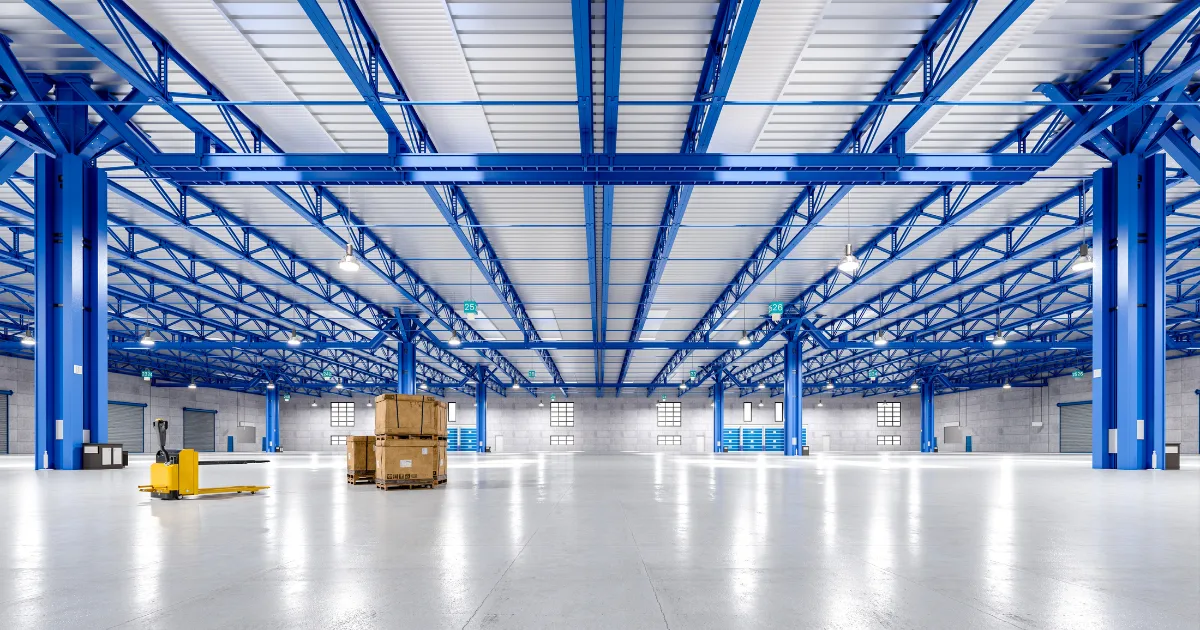What to consider when moving to a new warehouse: a practical guide for a smooth transition

Moving a warehouse is a big step that, when done right, can hugely increase efficiency and growth. It’s not just about moving inventory from Point A to Point B, it’s about ensuring continuity, avoiding costly disruptions, and setting your operations up for future success.
Whether you’re upgrading to a larger space, downsizing, or simply shifting locations to optimize logistics, a successful warehouse move requires thorough planning, clear communication, and the right tools.
This warehouse relocation checklist will help you keep operations running smoothly and avoid costly surprises before, after, and during your move.
1. Evaluate your current operations and improve what’s not working
Before you dive into planning the move, ask yourself the most important question:
Do you actually need to move?
At Parcelcube, we’ve seen some of our clients initially believing they had outgrown their current space. But the real problem wasn’t the size, but the lack of organization and inventory control. Once they integrated Parcelcube dimensioning systems with their WMS, they regained significant space, optimized storage, and avoided a costly relocation.
If the relocation is necessary, assess:
- Inventory accuracy and real-time visibility
- Space utilization and racking layout
- Picking and packing inefficiencies
- Manual vs automated measurement processes
This is your chance to improve. One of the biggest mistakes in moving a warehouse is taking outdated processes to the new space. A new warehouse is a clean sheet – use it to create a smarter and more efficient operation. You might discover it’s time to integrate a new dimensioning system instead of manual measurements, invest into an improved WMS or ERP or reorganize storage zones for speed and safety.
Pro tip: Ask your staff what frustrates them most about the current layout. They often have frontline insights into inefficiencies you may overlook.
2. Plan for warehouse growth (don’t just replicate the old setup)
Moving isn’t just about solving today’s problems. It’s also about anticipating the future. Factor in your expected growth, product expansion, workforce increase, or shift in order volume.
Key questions to ask:
Will you need more space for automation or robotics?
Do your current systems scale with your operations?
Are your tools flexible enough to evolve with your needs?
3. Build a realistic timeline and checklist
Start planning at least 6 months in advance. A warehouse move involves a lot of moving parts: lease agreements, inventory transfer, IT systems, compliance, staffing, and more.
Your checklist should include:
- Inventory review and disposal plan
- Vendor notifications and address updates
- Transfer of utilities and internet
- Delivery rescheduling
- New facility readiness (racking, equipment, security)
- Staff relocation or hiring
4. Inventory accuracy: this is where it might go wrong, unless you plan it right
Most businesses experience stock discrepancies during a move. To avoid costly write-offs:
- Use precise dimensioning and weighing tools during packing and unpacking.
- Have a plan for reconciling system inventory with physical counts post-move.
- Assign a team specifically to investigate stock anomalies.
Pro tip: Don’t rely on guesswork. Use automated dimensioning systems like Parcelcube to double-check incoming stock measurements during the move-in process.
5. Prepare warehouse staff
A successful warehouse runs on people who know the little things. Like how to scan a non-standard item, or which shelf gets overflow. When moving, those details get lost.
- Train new staff before the move if possible.
- Ask outgoing staff to document processes or provide Standard Operating Procedures (SOPs).
- Schedule daily huddles during the move for alignment and troubleshooting.
- Hire temporary staff for manual tasks like unpacking and sorting.
Pro tip: Document Everything. Do not rely on verbal plans or handshakes with your 3PL. Every step of the move plan, including layouts, delivery schedules, staffing, and risk mitigation, should be written down to avoid future misunderstandings.
6. Confirm all delivery, compliance, and contact details
Update the new warehouse address everywhere: supplier systems, your website, PO documents, delivery labels, customer portals.
Make sure your inbound delivery rules are clear to couriers.
Confirm regulatory compliance: fire exits, sprinklers, building codes, and local permits.
7. Monitor post-move KPIs, beyond just "It looks good"
A move is only successful if performance stabilizes or improves. Identify KPIs in advance to track post-move success:
- Stock loss %
- Inventory accuracy
- Pick/pack errors
- Order fulfillment time
- Damaged goods rate
Set a 30-day review point after the move to assess and course correct.
8. Use the warehouse move as an opportunity to upgrade technology
A warehouse move is the perfect moment to adopt smarter technologies. That includes:
- Mobile scanning systems
- Real-time tracking tools
- Dimensioning systems like Parcelcube
- Cloud-based inventory software
Parcelcube is an automated parcel dimensioning system that captures accurate weight and dimensions of parcels and irregularly shaped items in seconds, and sends the data directly to your WMS. It helps you save warehouse space, reduce manual errors, and speed up warehouse operations.
These investments not only improve accuracy but also save time and reduce labor costs long-term.
Final thoughts: the physical move is just the beginning
Before signing a new lease, optimize what you have. Use smart dimensioning systems like Parcelcube to bring order to your current space, integrate it with your WMS, and assess whether a move is truly necessary.
If you still decide to relocate, treat it as a strategic transformation, not just a logistical project.
With proper planning, smart technology, and clear communication, your warehouse transition is an opportunity for a more efficient, scalable, and profitable future.
Whether you’re building improved processes in a new warehouse or optimizing your current warehouse, Parcelcube’s dimensioning systems help to eliminate manual errors, save valuable space, and speed up your processes.
